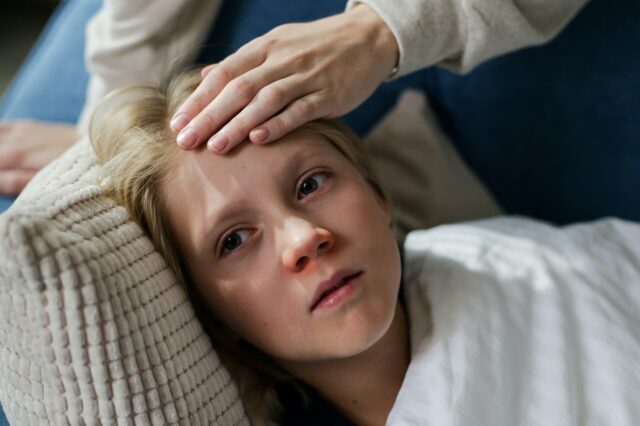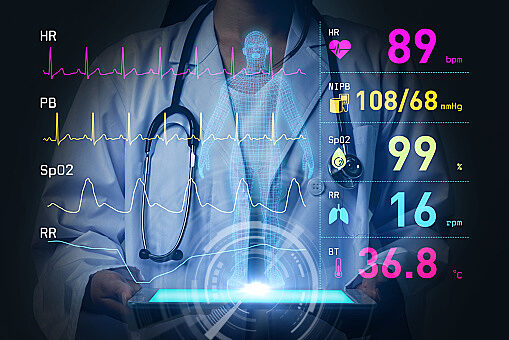Stopping Sepsis: Understanding the Signs and Symptoms
Sepsis is like an ember that sparks from a small campfire, suddenly threatening the whole forest. If not treated early, it can progress into septic shock. The…

Update your location to show providers, locations, and services closest to you.
Low blood pressure occurs when blood pressure is much lower than normal. This means the heart, brain, and other parts of the body do not get enough blood. Normal blood pressure is mostly between 90/60 mmHg and 120/80 mmHg.
The medical name for low blood pressure is hypotension.
Hypotension; Blood pressure - low; Postprandial hypotension; Orthostatic hypotension; Neurally mediated hypotension; NMH
Blood pressure varies from one person to another. A drop as little as 20 mmHg, can cause problems for some people. There are different types and causes of low blood pressure.
Severe hypotension can be caused by sudden loss of blood (shock), severe infection, heart attack, or severe allergic reaction (anaphylaxis).
Orthostatic hypotension is caused by a sudden change in body position. This occurs most often when you shift from lying down to standing. This type of low blood pressure usually lasts only a few seconds or minutes. If this type of low blood pressure occurs after eating, it is called postprandial orthostatic hypotension. This type most often affects older adults, those with high blood pressure, and people with Parkinson disease.
Neurally mediated hypotension (NMH) most often affects young adults and children. It can occur when a person has been standing for a long time. Children usually outgrow this type of hypotension.
Certain medicines and substances can lead to low blood pressure, including:
Other causes of low blood pressure include:
Symptoms of low blood pressure may include:
The health care provider will examine you to determine the cause of your low blood pressure. Your vital signs (temperature, pulse, rate of breathing, and blood pressure) will be checked frequently. You may need to stay in the hospital for a while.
The provider will ask questions, including:
The following tests may be done:
Lower than normal blood pressure in a healthy person that does not cause any symptoms often does not need treatment. Otherwise, treatment depends on the cause of your low blood pressure and your symptoms.
When you have symptoms from a drop in blood pressure, sit or lie down right away. Then raise your feet above heart level.
Severe hypotension caused by shock is a medical emergency. You may be given:
Treatments for low blood pressure after standing up too quickly include:
People with NMH should avoid triggers, such as standing for a long period of time. Other treatments include drinking fluids and increasing salt in your diet. Talk to your provider before trying these measures. In severe cases, medicines may be prescribed.
Low blood pressure can usually be treated with success.
Falls due to low blood pressure in older adults can lead to a broken hip or spine fracture. These injuries can reduce a person’s health and ability to move about.
Sudden severe drops in your blood pressure starves your body of oxygen. This can lead to damage of the heart, brain, and other organs. This type of low blood pressure can be life threatening if not treated right away.
If low blood pressure causes a person to pass out (become unconscious), seek treatment right away. Or call 911 or the local emergency number. If the person is not breathing or has no pulse, begin CPR.
Call your provider right away if you have any of the following symptoms:
Your provider may recommend certain steps to prevent or reduce your symptoms including:
Calkins HG, Zipes DP. Hypotension and syncope. In: Zipes DP, Libby P, Bonow RO, Mann DL, Tomaselli GF, Braunwald E, eds. Braunwald's Heart Disease: A Textbook of Cardiovascular Medicine. 11th ed. Philadelphia, PA: Elsevier; 2019:chap 43.
Schrigern DL. Approach to the patient with abnormal vital signs. In: Goldman L, Schafer AI, eds. Goldman-Cecil Medicine. 26th ed. Philadelphia, PA: Elsevier; 2020:chap 7.
Sepsis is like an ember that sparks from a small campfire, suddenly threatening the whole forest. If not treated early, it can progress into septic shock. The…

October 19, 2022
Using data collected from patients’ vital signs, University of Florida researchers have designed an artificial intelligence system that can accelerate and…
AI at UF, Department of Anesthesiology, Department of Medicine, +3 more

By now, everyone should know that losing weight, quitting smoking and reducing stress are sure ways to lower blood pressure. But there are other not-so-obvious, natural ways that also can help. And...
With just five minutes of effort per day, you can have lower blood pressure within weeks. Sound too good to be true? It’s not. In fact, newly published research confirms the technique’s...
By now, everyone should know that losing weight, quitting smoking and reducing stress are sure ways to lower blood pressure. But there are other not-so-obvious, natural ways to help. And virtually...